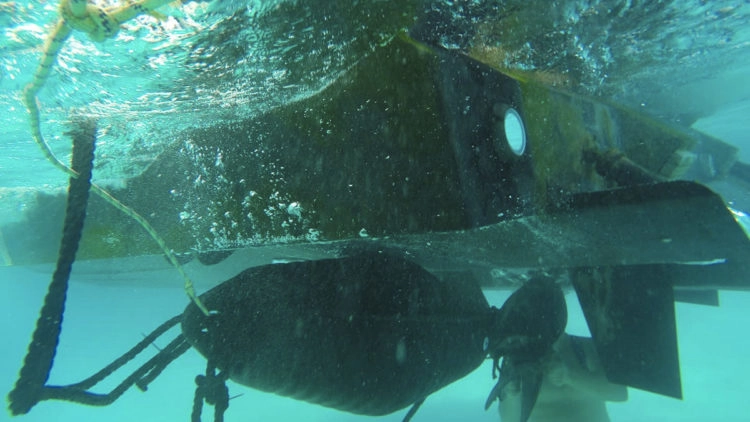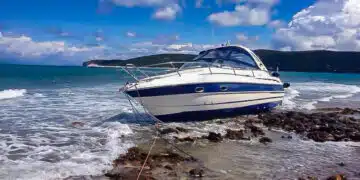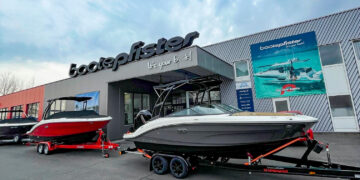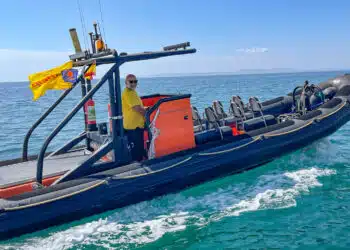The sound when the engine of a ship or yacht suddenly dies off because of an object that is caught in the propeller probably drives many an owner’s sweat beads onto his forehead. The first reaction is to disengage the clutch. The next thought is a major engine failure, but fuel problems or a fault in the electronics can also be the cause. Usually, however, relief comes quite quickly if it is “only” a line, a cord or a plastic bag that blocks the drive.
Free service for SeaHelp members
In such cases, whoever SeaHelp Membership The Yellow Angels of the Adriatic are quickly on the spot with their boats and – free of charge for members – free the propeller from its annoying ballast, so that in most cases the journey can be quickly resumed.
One of the most common reasons for assignments
A spokesman for SeaHelp’s operations center in Punat: “Objects getting caught in the propellers of our members’ boats and yachts happen almost daily during the peak season, and our emergency response teams have routine in such cases. Only in very difficult cases the wetsuit has to be used to cut the objects out of the propeller.

The skipper himself
Owners who dare to dive can of course solve the problem without any help. Under water a serrated knife usually does a good job. But the rescue operation for the Prop is not quite so simple. After cutting free, you should take the time to check the correct fit of the safety splint. If it should be torn, the propeller can quickly become independent and you can find it, if at all, on the sea bed.
Dangerous fishing lines
However, it can also be dangerous if a thin line, such as the one used by anglers, wraps around the propeller. Even if it does not happen often, it can work its way through the radial shaft seals towards the gearbox. Then there is usually the threat of costly damage. A light oil slick in the stern shaft is one of the visible harbingers of such damage. In most cases, it is therefore better to consult an expert who is familiar with such damage.
Danger also lurks just below the water surface
However, there is always the threat of trouble in the form of objects that can be caught by the propeller. Whether it’s detached hotel bathing lines that didn’t survive the last storm, or parts of fishing nets that threaten to become a danger just below the surface of the water – the Adriatic Sea has long since ceased to be as clean as its turquoise to blue colour on sunny days. It is also common for the buoys of the fishing nets or fish traps to sloppily shoot up the lines and make a large loop in the area of the buoy. Therefore it is important to always keep sufficient distance to buoys on the open sea!

Plastic waste a problem
Another problem: Plastic waste. Whether deliberately thrown from a ship or drifted from Albania to Croatia – the infinite number of disposable plastic items are often thoughtlessly disposed of in the sea, where they wait much longer than a century to rot.
But it is not always the others who are to blame. An anchor line which is not secured at all or only badly secured and which goes overboard with the next high wave or generally badly secured objects on board have already spoiled the trip for many an owner.

Ships quickly become unmanoeuvrable
It can be really dangerous for yacht and crew if objects get caught in the propeller during a storm. If, for example, the propulsion or propeller (as in the Z-drive) is also the rudder/control at the same time, then a motor yacht will be unable to manoeuvre even with only one engine affected.

In sailing yachts, SeaHelp’s experience from numerous missions has shown that it is often lines from the rig or entire sails that get caught in the propeller or rudder and cause maneuverability. Even the tow ropes from the dinghy very often get caught in the propeller when “parking”. Often at a time when it is not at all useful for the engine to fail. While in the marina usually a few strong hands are involved and hardly any external damage occurs, the skipper has hardly any chance to repair the damage with his own means when the weather is bad at sea. The ship then drifts without engine power – and mostly towards the rocks.
Recently, SeaHelp’s Mali Losinj forces had to be called out again to deal with such incidents. They were able to tow the unpowered ship to a sheltered bay to cut the propeller free. Shortly thereafter, the owner continued his journey.
Call for help: SeaHelp App use
Update
Obviously, some skippers didn’t read the SeaHelp article about the danger of lines in the propeller, or were just unlucky: On Saturday, another SeaHelp boat had to go out to cut a line from the propeller of a yacht. This shows once again how topical the topics described by SeaHelp are.
















